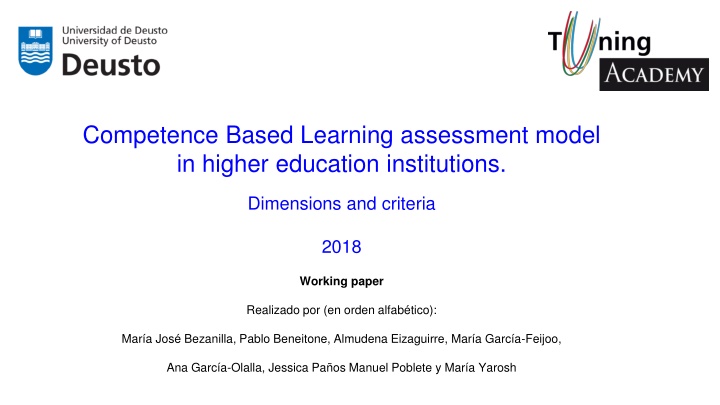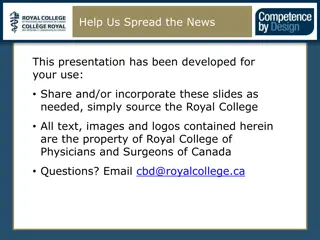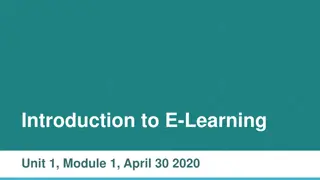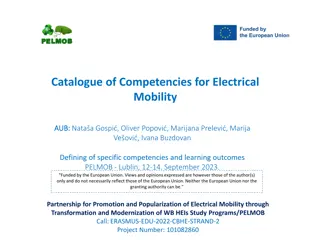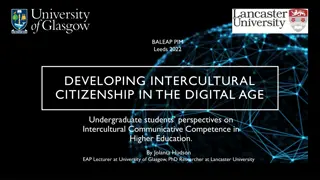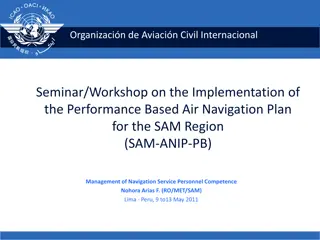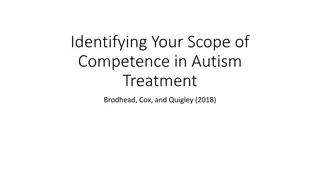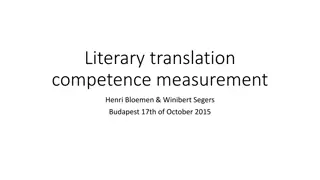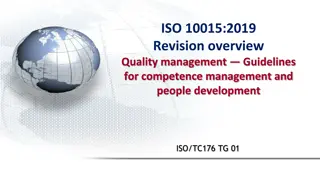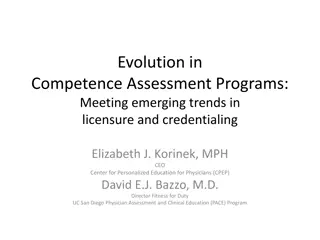Competence-Based Learning Assessment Model in Higher Education
This working paper discusses the dimensions and criteria of the Competence-Based Learning (CBL) assessment model in higher education institutions. It covers aspects such as the legal and administrative context, institutional support, degree planning, course planning, teaching methodologies, assessment strategies, and continuous improvement at both course and degree levels.
Uploaded on Apr 04, 2025 | 0 Views
Download Presentation

Please find below an Image/Link to download the presentation.
The content on the website is provided AS IS for your information and personal use only. It may not be sold, licensed, or shared on other websites without obtaining consent from the author.If you encounter any issues during the download, it is possible that the publisher has removed the file from their server.
You are allowed to download the files provided on this website for personal or commercial use, subject to the condition that they are used lawfully. All files are the property of their respective owners.
The content on the website is provided AS IS for your information and personal use only. It may not be sold, licensed, or shared on other websites without obtaining consent from the author.
E N D
Presentation Transcript
Competence Based Learning assessment model in higher education institutions. Dimensions and criteria 2018 Working paper Realizado por (en orden alfab tico): Mar a Jos Bezanilla, Pablo Beneitone, Almudena Eizaguirre, Mar a Garc a-Feijoo, Ana Garc a-Olalla, Jessica Pa os Manuel Poblete y Mar a Yarosh
Dimension 1: Legal and administrative context 1.1. There is current legislation that promotes higher education innovation incorporating CBL and/or student- centred learning. 1.2. There is guiding legislation on how to elaborate a CBL-based degree. 1.3. Higher education institutions and education administration or delegated agencies/organizations have at their disposal mechanisms or procedures to certify and supervise degrees including references to CBL. 1.4. There is government support for implementing CBL (financing, training, teaching innovation and improvement, incentive programmes ). Dimension 2: Institutional context 2.1. CBL appears in institutional documents (policy and/or strategic plan and/or pedagogical model). 2.2. There is a organizational support structure for CBL. 2.3. There are guidelines for developing mechanisms for the approval and supervision of CBL-based degrees and courses. 2.4. There are procedures for the selection, development, assessment and/or certification of teaching and non- academic staff. Dimension 3: Degree planning process 3.1. There is a study plan that defines the competences the degree develops and explicitly states the way its courses (or other equivalent units) progressively work on them. 3.2. Teachers of the degree plan the coordinated development of the competences in their respective courses, or equivalent units, through joint procedures and decisions.
Dimension 4: Course planning process 4.1. The contribution of the course to the degree profile is described and competences are defined. 4.2. Appropriate teaching-learning strategies for the development of competences are detailed. 4.3. The assessment system defined is appropriate to the competences the student is developing. Dimension 5: Teaching and assessment 5.1. Methodologies and resources (ICT, activities, spaces) are appropriate to develop the course competences. 5.2. The teacher acts as a tutor guiding and supporting the learning process. 5.3. Development of student competences is assessed using appropriate techniques and criteria. Dimension 6: Revision and improvements at course level 6.1. The teacher analyses the achievement of learning outcomes and his/her own teaching, and proposes and develops improvement actions. Dimension 7: Revision and improvements at degree level 7.1. There are mechanisms for degree revision and improvement.
